| This article needs additional citations for verification. Please help improve this article by adding citations to reliable sources. Unsourced material may be challenged and removed. Find sources: "List of authors banned in Nazi Germany" – news · newspapers · books · scholar · JSTOR (July 2012) (Learn how and when to remove this message) |
| This article includes a list of references, related reading, or external links, but its sources remain unclear because it lacks inline citations. Please help improve this article by introducing more precise citations. (March 2019) (Learn how and when to remove this message) |
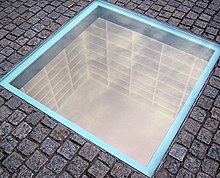
This list includes both authors whose entire literary production was officially banned in Nazi Germany and authors who were only partially banned. These authors are from the prohibitions lists in Nazi Germany and come from the following lists and others:
- List of damaging and undesirable writing, Liste des schädlichen und unerwünschten Schrifttums, December 31, 1938
- Jahreslisten 1939–1941. Unchanged new printing of the Leipzig edition, 1938–1941, Vaduz 1979
The official list was published by the Reichsministerium für Volksaufklärung und Propaganda (Ministry of Public Enlightenment and Propaganda). Authors, living and dead, were placed on the list because of Jewish descent, or because of pacifist or communist and/or Freemasonic sympathies or suspicion thereof.
In May and June 1933, in the first year of the Nazi government, there were book burnings. These book bans compose a part of the history of censorship and a subset of the list of banned books.
After World War II started, Germans created indexes of prohibited books in countries they occupied, of works in languages other than German. For example, in occupied Poland, an index of 1,500 prohibited authors was created.
Most serious efforts were dedicated to the writers of ethnic Jewish descent: In 1938, a team tasked by Alfred Rosenberg produced the Verzeichnis jüdischer Autoren (Register of Jewish Authors) that listed some 11,000 Jewish writers while in 1941 the Germans began the Bibliographie der jüdischen Autoren in deutscher Sprache: 1901–1940 (Bibliography of Jewish Authors in the German Language), initially supposed to contain some 90,000 names but ending up with 28,000 in March 1944 as the project was stopped due to a lack of personnel.
A
B

- Otto Bauer
- Vicki Baum
- Johannes R. Becher
- Richard Beer-Hofmann
- Hilaire Belloc
- Walter Benjamin
- Robert Hugh Benson
- Walter A. Berendsohn
- Ernst Bloch
- Felix Braun
- Bertolt Brecht
- Willi Bredel
- Hermann Broch
- Ferdinand Bruckner
- Nikolai Bukharin
- Edgar Rice Burroughs
- Richard Francis Burton
C
D
E

F
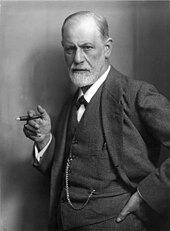
- Lion Feuchtwanger
- F. Scott Fitzgerald
- Marieluise Fleißer
- Leonhard Frank
- Benjamin Franklin
- Anna Freud
- Sigmund Freud
- Egon Friedell
G
H

- Ernst Haeckel
- Radclyffe Hall
- Jaroslav Hašek
- Walter Hasenclever
- Raoul Hausmann
- Friedrich Hayek
- Heinrich Heine
- Ernest Hemingway
- Theodor Herzl
- Hermann Hesse
- Magnus Hirschfeld
- J. Edgar Hoover
- Jakob van Hoddis
- Ödön von Horvath
- Karl Hubbuch
- Aldous Huxley
I
J
K

- Franz Kafka
- Georg Kaiser
- Mascha Kaleko
- Hermann Kantorowicz
- Erich Kästner
- Karl Kautsky
- Hans Kelsen
- Alfred Kerr
- Irmgard Keun
- John Maynard Keynes
- Rudyard Kipling
- Klabund
- Heinrich Kley
- Annette Kolb
- Alexandra Kollontai
- Paul Kornfeld
- Siegfried Kracauer
- Karl Kraus
- Peter Kropotkin
- Adam Kuckhoff
L
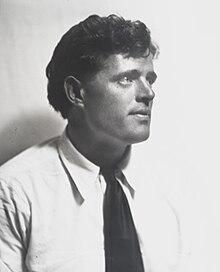
- Else Lasker-Schüler
- Vladimir Lenin
- Karl Liebknecht
- Jack London
- Ernst Lothar
- Emil Ludwig
- Rosa Luxemburg
M
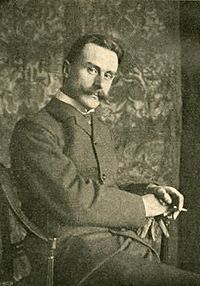
- André Malraux
- Heinrich Mann
- Klaus Mann
- Thomas Mann
- Mao Zedong
- Hans Marchwitza
- Ludwig Marcuse
- Karl Marx
- Vladimir Mayakovsky
- Walter Mehring
- Thomas Merton
- Gustav Meyrink
- Ludwig von Mises
- Montesquieu
- Erich Mühsam
- Robert Musil
N
O

P
R

- Ayn Rand
- Fritz Reck-Malleczewen
- Paul Ree
- Gustav Regler
- Wilhelm Reich
- Erich Maria Remarque
- Karl Renner
- Rainer Maria Rilke
- Joachim Ringelnatz
- Joseph Roth
- Jean-Jacques Rousseau
S

- Nelly Sachs
- Felix Salten
- Rahel Sanzara
- Arthur Schnitzler
- Alvin Schwartz
- Anna Seghers
- Walter Serner
- Fulton Sheen
- Ignazio Silone
- Joseph Stalin
- John Steinbeck
- Rudolf Steiner
- Carl Sternheim
T
V
W
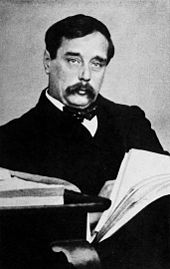
- Jakob Wassermann
- Armin T. Wegner
- Simone Weil
- H. G. Wells
- Franz Werfel
- Oscar Wilde
- Eugen Gottlob Winkler
- Friedrich Wolf
Z
See also
References
- Verbrannte und verbannte
- Czesław Madajczyk, Polityka III Rzeszy w okupowanej Polsce, Tom II (Politics of the Third Reich in Occupied Poland, Part Two), Państwowe Wydawnictwo Naukowe, 1970, p.125
- Guenter, Lewy (2016). Harmful and Undesirable: Book Censorship in Nazi Germany. New York (N.Y.): Oxford University press. p. 102. ISBN 978-0-19-027528-0.
- Online-Veröffentlichung der Liste der von den Nationalsozialisten verbotenen Schriften.
- "Books prohibited by the Nazi Party: A selection of works by Thomas Mann, whose writings were banned by the Nazis". The Wiener Holocaust Library. Retrieved June 23, 2023.
External links
- List of books banned by the Nazis, from the website Berlin.de
- List of authors banned by the Nazis, from the website verbrannte-und-verbannte.de